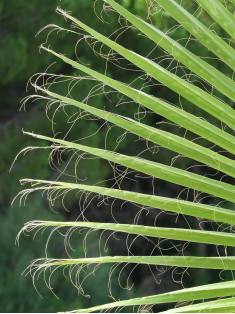What is fiber
Release time:
2019-12-18 21:29
source:
Fiber is a well-known word. In human diet and animal feed, dietary fiber plays an important role. Especially for herbivores, dietary fiber content plays an important role in their physiological health. According to the national standard for nutrient composition of compound feed for experimental animals (gb14924.3-2010), the crude fiber (CF) content of feed for herbivorous experimental animals (rabbits, guinea pigs) should be between 10% and 15%. So, what is fiber? What is crude fiber?

At first, dietary fiber was generally defined as "the structure and components of plant cells that are resistant to the digestion and absorption of mammalian endogenous digestive enzymes". Later, researchers defined it as "all feed ingredients that cannot be digested by digestive enzymes secreted by the digestive tract of mammals". These definitions have some limitations. At present, the commonly accepted definition refers to the cell wall components in feed which are derived from plants but cannot be digested by digestive enzymes of pancreas or small intestine of animals.
If we classify the fiber according to its structure and properties, it can be divided into two categories: one is water-insoluble fiber, which includes lignin, cellulose, hemicellulose and water-insoluble pectin; the other is water-soluble non starch polysaccharide, including part of β - glucan, arabinoxylan, pectin and part of hemicellulose. Among them, lignin is the only non carbohydrate component.
Through the above introduction, we have a general understanding of the fiber composition. What is the crude fiber specified in the national standard? Is it equivalent to fiber?
Friends who have a little knowledge of diet nutrition may have heard the words crude fiber, neutral detergent fiber (NDF), acid detergent fiber (ADF). Careful friends will also find that the content of NDF and ADF is usually higher than that of CF. What is the relationship between these fibers?
First of all, the crude fiber is not an exact chemical entity, but a general composition measured under the recognized mandatory conditions. Through the acid-base washing method, first with acid treatment, and then alkali hydrolysis, extraction of fiber residues. The fibers measured by this method are mainly cellulose, and a small amount of hemicellulose and lignin. However, the chemical composition of fiber residues from different sources is highly different.
In view of the shortcomings of crude fiber determination method, van Soest proposed the determination method of neutral detergent fiber and acid detergent fiber in 1967, which has been continuously improved. Neutral washing fiber method is to separate insoluble fiber components in cell wall by hot neutral detergent. Because most of the pectin is dissolved, the insoluble fiber components such as cellulose, hemicellulose and lignin are separated. Acid washing fiber method is to separate cellulose, lignin and other fiber components with acid detergent. If cellulose is dissolved with strong acid, lignin can be separated from ADF residue.
Therefore, NDF mainly includes lignin, cellulose and most of semi fibers, ADF mainly includes lignin and cellulose.

Fiber is a compound component with special nutritional and physiological functions in diet. Fiber plays an important role in herbivores. Taking rabbits as an example, fiber, as the substrate of cecal microbial fermentation, can produce volatile fatty acids to provide energy for rabbits, at the same time, it can stimulate the peristalsis of digestive tract, improve the rate of chyme outflow, maintain the normal digestive physiology of rabbits, and have an impact on its production performance, intestinal morphology, cecal fermentation and diarrhea rate. Therefore, it is necessary to have a more comprehensive understanding of fiber and set up a more reasonable fiber composition and content to ensure the healthy growth of animals.
previous page
next page
previous page
next page


